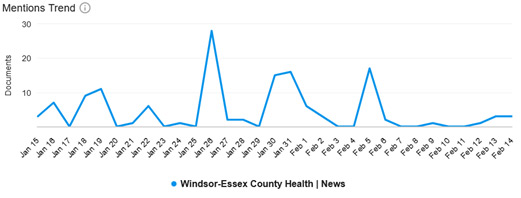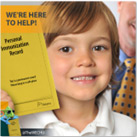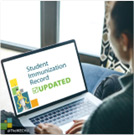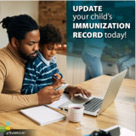PREPARED BY:
Infectious Disease Prevention
DATE:
2024-05-16
SUBJECT:
Communicable Diseases and Outbreaks
BACKGROUND/PURPOSE
The Windsor-Essex County Health Unit’s (WECHU) Infectious Disease Prevention (IDP) department provides programs and services focused on addressing communicable disease prevention and control. Through case and contact management, the WECHU works to isolate and contain cases of disease from further impacting our community. The WECHU also uses methods of surveillance to identify trends of illness and inform decision making for public health interventions. Although the IDP department responds to all reports of diseases with public health significance, respiratory diseases have a greater potential to lead to outbreaks in congregate living spaces when cases peak during the respiratory season; which is observed primarily from early fall to late winter each year.
| Respiratory Season | Influenza Cases | COVID-19 Cases | Total Respiratory Outbreaks | COVID-19 Outbreaks |
|---|---|---|---|---|
| 2020-21 | 0 | 15,594 | 275 | 270 (98.2%) |
| 2021-22 | 60 | 29,278 | 567 | 550 (97.0%) |
| 2022-23 | 407 | 7,503 | 239 | 193 (80.8%) |
| 2023-24 | 686 | 1,830 | 163 | 117 (71.8%) |
DISCUSSION
COVID-19
While COVID-19 continues to be a major cause of respiratory illness worldwide, the World Health Organization states that Covid-19 no longer qualifies as a global emergency. Decreasing number of COVID-19 cases and increased levels of immunity, have shifted the way that covid-19 illness is managed. Driven by provincial guidance, WECHU continues to focus its efforts on integrating Covid-19 as part of regular case and contact management activities, with COVID-19 becoming a part of long-term standardized processes for managing cases of respiratory illness. In the 2023-2024 season, cases of COVID-19 locally have decreased from 7,503 to 1,830, a 76% reduction from the previous season. The WECHU continues to receive positive COVID-19 reports for individuals in hospital or congregate living settings, and these facilities are provided guidance on respiratory infection control practices.
Influenza Cases
As COVID-19 cases are decreasing, the WECHU has observed a rise in confirmed influenza cases this past respiratory season which is consistent with provincial data reports of influenza illness. During the 2022-2023 respiratory season, the reported case count for influenza was 407. However, in the 2023-2024 season, there has been a notable increase, with 686 confirmed cases reported from September 2023 to date.
Measles
Measles, a serious respiratory infection, was rare in Ontario, due in large part to the successful elimination of measles in Canada. However, in line with an increase in measles activity seen globally, Ontario has recorded 14 laboratory-confirmed cases of measles to date in 2024. Thirteen of these cases are linked to international travel and 8 were individuals not previously vaccinated for measles.
Locally, the WECHU investigated 1 travel-related adult confirmed case of measles in January. No other cases have been confirmed to date in WEC. Case management and contact tracing efforts focused on ensuring the case remained isolated during the infectious period and minimizing the risk of exposure to our community.
Outbreaks
The WECHU investigates all reports of suspected and confirmed outbreaks in high risk congregate living settings including long-term care, retirement homes, supportive housing, shelters, and boarding homes. For the 2022-2023 season, the WECHU reported 239 total respiratory outbreaks. Of those, 193 (80%) were due to COVID-19. From Sept 2023 to date, the WECHU has seen a decrease in the number of respiratory outbreaks to 163 where 117 (71%) were due to COVID-19. Other respiratory infections such as Influenza, RSV, Metapneumovirus, Parainfluenza, and others, that were absent during the 2020 to 2021 outbreak season, where COVID-19 infection predominated, have now made a resurgence.
While the impact of COVID-19 has decreased since the beginning of the 2020 pandemic, the WECHU continues to advise the public of precautionary measures for all respiratory illnesses, including influenza and measles. Promotional activities such as external messaging on social media platforms, or public health alerts have been aimed at the importance of vaccination, respiratory etiquette, hand hygiene, staying home when unwell, and wearing masks when the risk necessitates it.
Infection Prevention & Control (IPAC) Hub
WECHU continues in its commitment to support and strengthen infection control practices in our community through the IPAC Hub. Using a collaborative approach, WECHU nurses and Public Health Inspectors conduct supportive visits to congregate living facilities, targeting education to IPAC leads around infection control best practices. In an effort to build capacity and knowledge, facilities are encouraged to engage self-assessment questionnaires to review their internal IPAC practices and measure those practices against established standards. IPAC leads are also encouraged to participate in the Windsor-Essex IPAC Community of Practice (CoP) monthly forums. Recent topics of discussion have included: Outbreak Prevention, Internal Auditing of Hand Hygiene practices, and Waste Management.

















